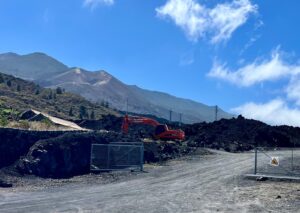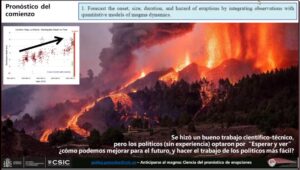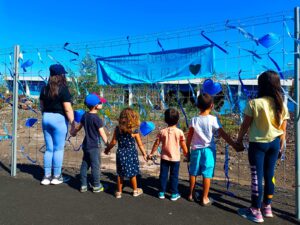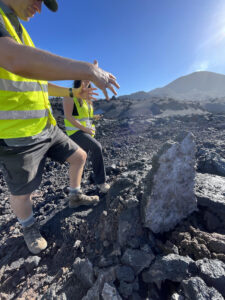12 Jul La Palma Reconstruction – June 2024

La Palma’s Reconstruction: June 2024 Update
News roundup from across La Palma regarding science occurring in La Palma, reconstruction efforts, aid provided to residents and industries, and other relevant news. Sources: La Palma Ahora, Cabildo de La Palma, El Time, ABC España, El Valle de Aridane, El Dia,
Mirame, Planeta Canario, Canarias 7, El Diario, National Geographic
Reconstruction
- Delimiting the protected volcanic area – The Government of the Canary Islands has announced they are working on delimiting the area affected by the 2021 eruption which will be protected. It is thought that at a minimum this protected area will cover the cone and the lava deltas, although the government was keen to stress they don’t want them to be so restrictive that they make recovery harder for those affected by the eruption.
-

The PSOE of El Paso regrets that “the president of the Cabildo forgets the municipality by not recovering the LP-2” (El Time, 2024)
LP-2 road recovery – The recovery of the LP2 highway between Las Manchas and Tajuya continues to be debated. Minister Pablo Rodríguez has explained the government has opted for a modified project to recover the road in the interests of time, rather than the original idea to almost replicate the route of the old road. He has also stated that he hopes the modified project will not be subject to an environmental assessment so the work can be completed as soon as possible.
- LP-211 road recovery – The Cabildo has begun the recovery of a section of the LP-211 road near to Todoque. This is a 2.2 km long stretch of road between La Laguna and Hoyo de Todoque, with a budget of €10.5 million for 10 months work, and will also provide a corridor for infrastructure and services including utility pipelines.
- Recovery of Las Manchas – A perspective piece for CanariasAhora has suggested that with the improvements in the reopening of Puerto Naos, the next settlement to focus on should be Las Manchas, the village to the southeast of the flows which was partially destroyed in the eruption. None of the 6 supermarkets, nor the petrol station, have reopened since the eruption, meaning locals have a 45 minute trip across the flows to Los Llanos for their essentials. The rebuilding of the LP-2 would go some way to improving connectivity and access to local services from the village.
- Access to farms improved – Further recovery work to the Camino de San Isidro in Tazacorte, which goes across the 2021 lava flows, has been completed to improve access to the farms in this area, many of which were not destroyed but were isolated by the lava flows initially.
Spanish Govt. Reviews Agricultural and Reconstruction decrees – As part of ratifying the Housing and Agricultural reconstruction decrees for La Palma, the Spanish Ministry of Territorial Policy has raised concerns over articles in both texts over unconstitutionality. The resolution of these articles and provisions have been referred to a bilateral working group between the Spanish and Canary Islands Governments. - La Laguna School – Despite the massive investment in reconstruction of infrastructure including roads on La Palma, the demolition and rebuilding of the partially destroyed La Laguna School on the northern edge of the flows has still yet to begin, despite promises from the administration. Currently, classes are taking place in temporary prefabricated modular classrooms.
- Volcano Law Update – The Canarian Parliament has unanimously accepted the ‘Volcano Law’ to be considered by parliament. The law is borne from a citizen initiative to protect the rights of citizens during and after volcanic eruptions and received 20,000 signatures of support across the Canary Islands. All parliamentary groups have shown interest in debating and reaching a consensus on the law.
- Lack of permanent housing solutions – An editorial by Tierra Bonita has highlighted again the extended wait for permanent housing solutions for those affected by the authorities. The temporary homes, modular wooden or metal container homes, were delivered up until December 2022, well after the authorities initially intended, and permanent homes have yet to be built, more than two and a half years after the end of the eruption.
Aid
- 60% income tax deduction – It has been confirmed that the Government of Spain will approve the continuation of the 60% income tax deduction for citizens of La Palma by the end of June. The deduction has already been in place following the eruption, and hopes to aid the economic recovery of the island.
- Extension of loan and mortgage moratorium – The moratorium on loans and mortgages following the eruption have been extended, however only for those living in the Aridane Valley, and this extension will be the last time it is extended.
Science
- GeoTenerife and GNS in La Palma – A team of scientists from GNS Science in New Zealand have been collaborating with on fieldwork in La Palma with GeoTenerife. The work aims to better understand some of the lava flow dynamics and is part of a bigger project using La Palma as an analogue for a potential future volcanic eruption in the Auckland Volcanic Field.
- GeoTourism potential – Researchers at the University of La Laguna in Tenerife have analysed the potential for GeoTourism on La Palma centred around volcanoes, including Volcán de Tajogaite from 2021. This was done through surveys and identifying sites of interest, with the results showing the pre-2021 volcanoes already played a major part in the island’s heritage, and that GeoTourism will play a key part in the recovery plans of the island.
Building blocks from ash – The construction of a new essential services building in Tenerife has begun, built with building blocks made from ash from the Tajogaite Volcano. - Marine materials made from volcanic ash – The Valencian Institute for Competitiveness and Innovation (Ivace+i) is collaborating in the development of new sustainable concrete dikes, made partially from ash from the volcano, which will be used in dock and port protections and also encourage the colonisation of marine plants and animals in these areas.
- Puerto Naos and La Bombilla recovery – Access to 10 more homes has been authorised in La Bombilla, taking the total number between the two settlements to 790. Furthermore, another 600 gas sensors are being added to the current network by IGN, hoping to constrain CO2 concentrations around some commercial premises better. This will take the total number of sensors in the area to more than 1,500. Elsewhere, the large Hotel Sol in Puerto Naos has announced its reopening on July 15th and an investment of €4.5 million in the facility. This will see its ~1,000 tourist beds operating at full capacity for the winter tourism season.
- Soil measurements – IGME, the Geological and Mining Institute of Spain, has continued over the last 18 months to measure ground fractures on La Palma. Some of the fractures don’t show any movement, however others continue to register movement. It has been shown that some of the fractures don’t correspond to the latest eruption, and actually date back to the 1980s.
Other updates
-

Pablo González, CSIC volcanologist: “In the La Palma eruption, politicians made the worst decision: wait and see” (El Valle de Aridane, 2024)
Making PEVOLCA meeting recordings public – A report has been commissioned to the Canary Islands Government to determine under what conditions recordings of PEVOLCA meetings during the eruption can be made public. Previously, citizens have requested these to understand decision-making during the emergency but have been denied access. There is increased demand for the recordings to be made public after access to the recordings was granted to the opposition group VOX
- Perspective of improvements in emergency management – CSIC Volcanologist Pablo González in a seminar has given some of his perspectives on how the management of the 2021 eruption could have been better. Firstly, he acknowledges that good scientific and technical work was done, although the politicians and authorities decided to ‘wait and see’, which was not the best decision. Furthermore, he suggests that scientists were caught by surprise by only basing themselves on recognising patterns. Finally, he mentioned the ongoing issues that instrumental monitoring networks in the Canary Islands are often duplicated and data is not shared, which impacts the ability of different institutions to collaborate.



No Comments